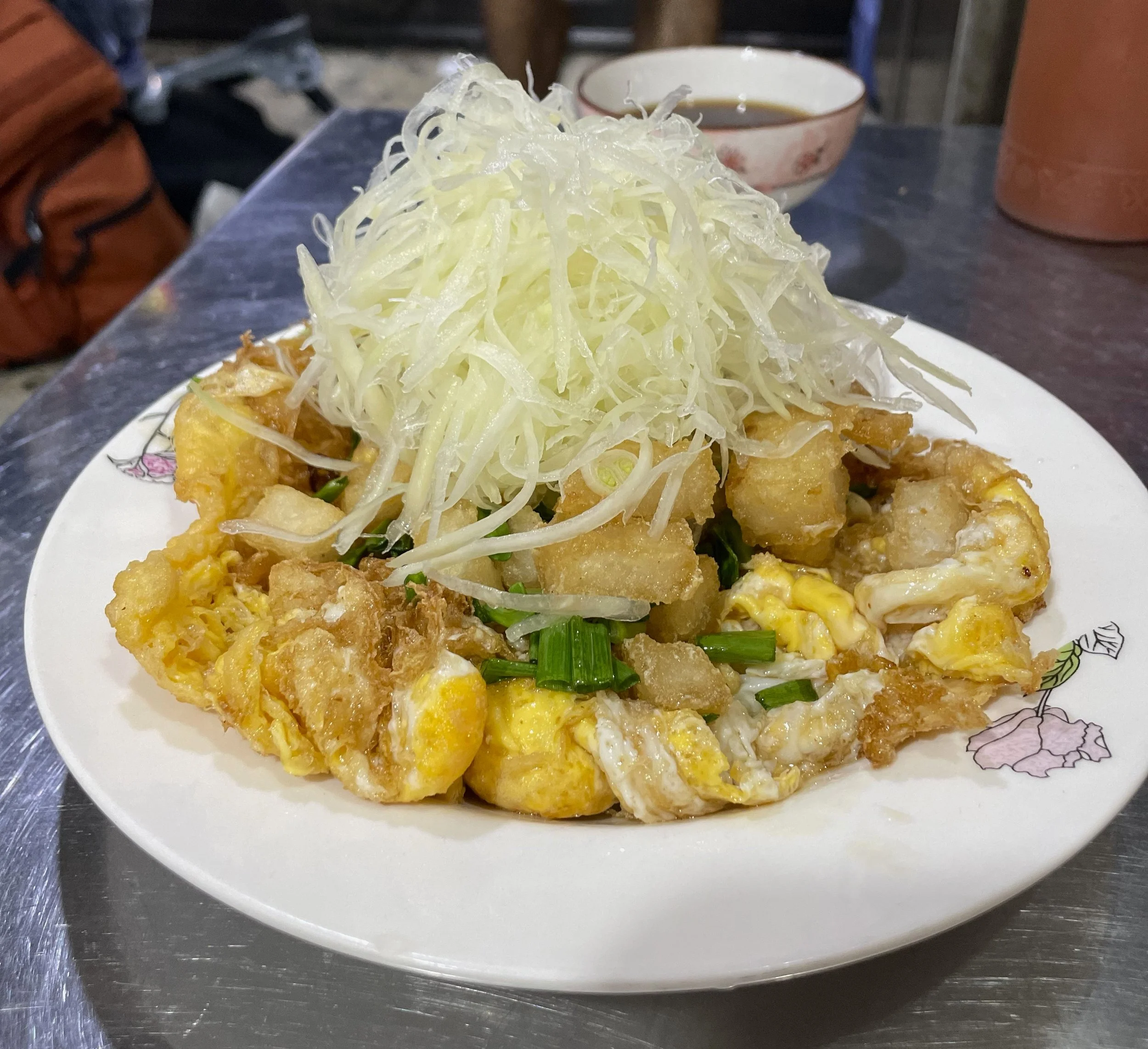Beef Lok Lak is a classic and comforting dish that finds its unofficial roots in Cambodia. It is a dish that is simple and popular amongst locals and tourists throughout Cambodia but a variation of it can also be found in Vietnam.
The Vietnamese version is called Bò lúc lắc which means shaking beef in reference to the beef being stir-fried quickly in a wok. There are other theories on how the dish was called lok lak; it could have possibly been derived from the French word 'l’escalope’ or possibly the Chinese word ‘lu’ meaning to stir-fry.
Despite the simplicity of this dish, it is possible to be poorly executed in the wrong hands. The importance is in the quality of ingredients, cooking time and the right balance of pepper and citrus. The element that makes Cambodian Lok Lak so very special is the use of the country’s world renown Kampot pepper.
This dish points strongly to Chinese heritage with its cooking method of stir-frying and the use soy sauce in the marinade. The Chinese have had an influence on Cambodia’s history dating back to the 13th Century, prior to the Angkor empire, when they were based at the capital ‘Funan’ at Angkor Borei in the Takeo province. Their entry point into Cambodia was also alongside the Indians as traders of silk, spices, wood, gold, and ivory around the 1st Century CE.
Pou Lok Lak
The original and most common Lok Lak is made with beef; however, restaurants now offer variations of the dish. Cambodian cuisine to this day still relies heavily on freshwater fish and was the original and most abundant protein source. Other proteins are readily available today, including beef. Cattle were initially used to work on the land and consumption of meat product and dairy was secondary. During the French colonial period in Cambodia, a variety of cattle breeds were introduced from Europe and were bred specifically for dairy and meat on a larger scale.
The most important ingredient in beef Lok Lak is Kampot pepper. There is no other pepper in the world like it as it is grown in a unique area and terroir at the base of the Elephant Mountains. It is an internationally recognised gourmet product that has Protected Geographical Indication (PGI) status which guarantees high-quality standards in farming techniques and methods. There are a few companies that sell red, black and white pepper varieties, the most flavourful and 100% organic I have tried is Hong Spices.
How to make Cambodian Lok Lak
Ideally, a good sirloin or ribeye will make a delicious lok lak, it is then cut into cubes and marinated in a mixture of rice wine vinegar, soy, garlic, oyster sauce, a small amount of cornstarch, and sugar. The beef can be stir-fried with green peppercorns quickly and then tossed with thinly sliced raw white onions. It is then plated next to a good mound of white rice, decorated with red tomatoes, cucumber, and lettuce as well as a fried egg.
The dipping sauce that accompanies beef lok lak is a mixture of salt, pepper, and lime juice. Add chilli if you need it!
After eating a bunch of Lok Lak in Cambodia, in particular, Siem Reap, I’ve summed up a few places you can go and try when you are there. The below recommendations are subjective (like art!) and range in pricing from about $3 USD upwards.
Chanrey Tree
This restaurant is set in a beautiful traditional Khmer house by the river and serves traditional countryside cuisine. The waiters are well-versed in Cambodian cuisine and ingredients (I asked them a bunch of questions) and it makes for a little more of an upmarket meal out.
Price: $10.50usd
Address: Pokombo Ave, along Siem Reap riverside, 50m before Preah Prum Rath pagoda
Credit: Chanrey tree Lok Lak
Khmer Kitchen
Started by Perk Sophal, this restaurant is located in the tourist area, and offers a large variety of Khmer dishes for decent prices. The service is quick, but you will be eating amongst a lot of other foreigners. Worth a try if you are wandering around the Old Market or heading out to Pub Street later.
Price: $5.50usd
Address: Corner of 2 Thnou Street & Street 9, Old Market, Siem Reap
Credit: Khmer Kitchen
Pou Kitchen and Cafe
This restaurant is run by Chef Mengly and his team of young talented chefs. While keeping the classic flavours of Khmer cuisine, he adapts the dishes to a modern form that is innovative yet still approachable. Try a little something out of your comfort zone here like a roasted beehive!
Price: $7.88
Address:557 Wat Bo Road, Krong Siem Reap Cambodia
Sinorn Bor Bor Monsrae
This local gem was a true find and is run by siblings. It is frequented mostly by locals and is known for its signature bor bor which is delicious. The beef lok lak here is really good too and made with a lot of love and care and it is extremely well-priced.
Price: $3
Address: Stueng Thmei Stueng Thmei Siem reap, 17252, Cambodia
The Sugar Palm
Known to many in Siem Reap as the OG of Khmer cuisine. It was opened by Chef Kethana who was born in Cambodia yet spent many years in New Zealand during the troubled times of the late 1970s. This restaurant serves the classics very well!
Price: $7
Address:Street 27, Siem Reap, Cambodia, (opposite Pannasastra University)
Tevy’s Place
This affordable local place is run by women and wonderful service. The food is simple and good and has dishes to suit anyone’s craving.
Price: $3.50
Address: Street 26, Krong Siem Reap, Siem Reap, Cambodia
Mekola
A really good local place that serves a great bai sach chrouk (pork rice) and the portions are really generous. Run out of the bottom of someone’s house and the whole family pitches in to cook and serve tables.
Price: $3
Address:9V46+V2Q, Wat Bo Rd, Krong Siem Reap, Cambodia






